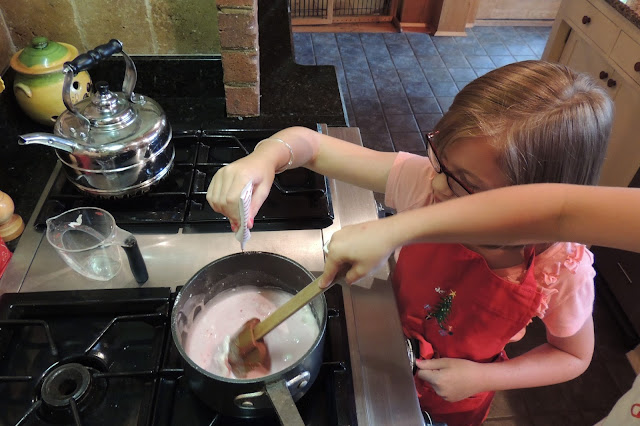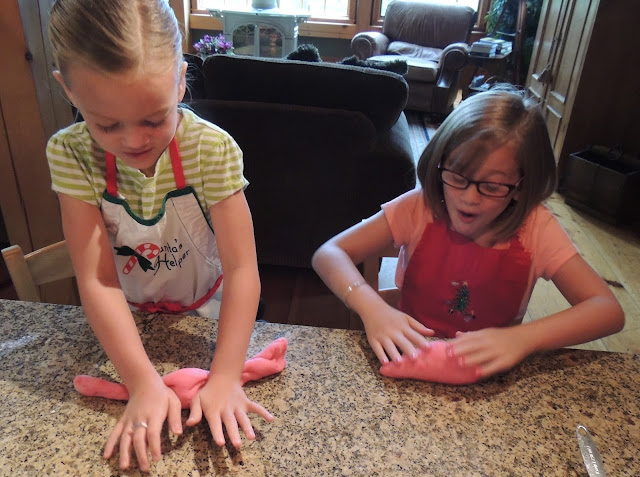Last week, I introduced my cookbook project , along with a review of the first book I had chosen. I'd randomly pulled one of my cookbooks off the shelf, read it from cover to cover, and selected some interesting recipes to try. You can go here to read my review on The Homemade Pantry by Alana Chernila.

I love this book and could hardly wait to squeeze some kitchen time in my schedule, so I could begin experimenting. First on my list was pie crust. Me and pastry dough, well we've not always been on the best of terms. I can make a pie crust from scratch, but it's a struggle. Sometimes its too crumbly and is a complete mess when I try to roll it out to put in a dish. To counteract this problem, I often end up adding too much liquid, which results in a goopy mess. Sometimes it turns out tough and of course what I'm going for, is tender and flaky. After fighting with the dough and finally getting it in the dish, it doesn't always look beautiful. As you can see, making a pie with a homemade crust is a bit of a risk for me. "Will it work this time?", is the question that I ask whenever I start to make a pie, and because of this uncertainty, pie making has never been my favorite thing to do. Which is a shame, because it's unquestionably my husband's favorite dessert.
Now, I could always buy a crust in the store and I do from time to time. But the only way I can do that, is if I don't look at the list of ingredients. Ignorance is bliss doesn't really apply when you've already been educated, but I can selectively forget what I've learned in a pinch. Pie crust should really only have a few basic ingredients and it's always best when you can pronounce them. After reading Alana's recipe for basic pie crust, I was intrigued by her method, which she has convinced me is fail proof, and is totally unlike any pastry recipe I've used in the past. The key is keeping all the ingredients cold and using a stand mixer.
So, here we go. The first thing I did was take my butter directly from the refrigerator and dice it in small pieces.
After measuring the flour into my bowl, I dropped the butter cubes into the flour and gently mixed them up by hand, covering all the butter with flour.
In a measuring cup, I added apple cider vinegar and salt to water. Then the bowl with flour and butter and the measuring cup with the liquids went into the freezer for 10 minutes. The only hard part here? Cleaning out enough space in the freezer to sit a large mixing bowl!
After the ten minutes had passed, I attached my paddle to the mixer and blended the flour and butter, until the mixture resembled small crumbs.
With the mixer still running, I slowly added the cold water, vinegar and dissolved salt mixture into the flour. Then I watched and waited and maybe held my breath a little, feeling doubtful, yet hoping that this was going to work. After what felt like minutes (but really were only seconds) , those old thoughts were starting to resurface, "maybe I just need to add a little more water...", when it happened! In an instant it all came together into a ball and I had pastry dough.
Amazing! And so easy.
I gently kneaded the dough a couple of times and then divided it in half.
I shaped both pieces into a flattened disc and covered them with plastic wrap. The recipe suggests refrigerating for at least an hour, or up to 3 days. At this point it can also be frozen for up to 6 months. If there was anything negative I had to say about this recipe it would be, you have to plan ahead. Mixing up the dough in the morning and then putting the pie together in the afternoon, was the system that worked for me.
After the refrigeration period, I took the dough out and let it rest for about 15 minutes before rolling into a circle. I can't even begin to describe what a dream this dough is to work with. No crumbling or tearing. It's perfect!
I decided to put this crust to good use by making a blackberry pie. Thanks to my friend who has been sharing her blackberries, I had plenty to make Mark's favorite dessert.
And just look at that beautiful pie! The crust was delicious, flaky and tender and buttery... oh my! I'm completely sold. This really is the perfect pie crust. I've made it twice now, with good results both times. Having some of this pastry dough tucked away in the freezer seems like a smart idea. And with the holidays just around the corner, pies will definitely be on the menu.
Basic Pie Crust
1 cup (2 sticks) cold, unsalted butter
2 1/4 cups all purpose flour
2 t. apple cider vinegar
1/2 t. salt
Cut the butter into 1/2 inch squares and combine with the
flour in the bowl of a stand mixer. Using your hands, toss
the mixture to coat the butter in the flour. Put the bowl in the
freezer. In a measuring cup, combine 1/2 cup water, the
vinegar and salt. Stir until the salt dissolves and put the
measuring cup in the freezer. Freeze both mixtures for 10
minutes.
Take the mixing bowl out of the freezer and blend the mixture
on low speed with the paddle attachment until it starts to
become the texture of crumbly meal. Take the measuring cup
out of the freezer and, with the mixer running on low speed,
slowly pour the wet mix into the bowl. The dough will be
crumbly at first, then after 10 to 20 seconds, it will come
together in a ball. Stop the mixer.
Turn the dough out onto the counter and press it together into
a large disc. Cut the dough in two equal parts, wrap each piece
in waxed paper or plastic wrap and press into a disc. Refrigerate
for at least 1 hour or up to 3 days. Take the dough out of the
refrigerator 15 minutes before you are ready to roll it out.
Makes two 9 inch pie crusts.
From The Homemade Pantry by Alana Chernila






































































